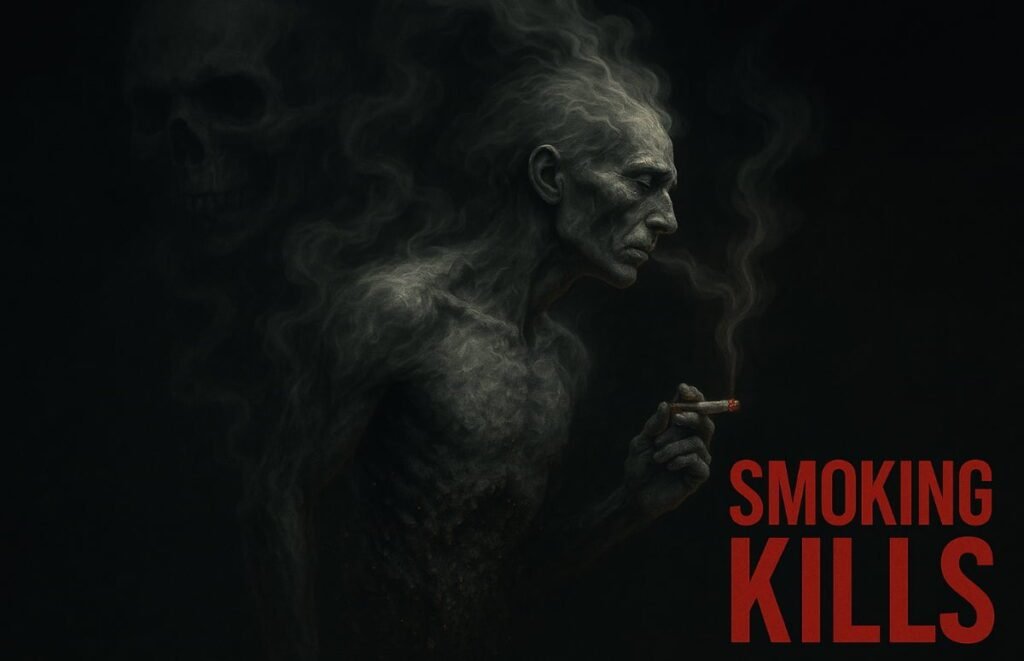Smoking English Paragraph For All Classes Of Students

Paragraph: 400 Words
Smoking: A Dangerous Habit
Smoking is one of the most harmful habits affecting millions of people worldwide. It involves inhaling smoke from burning tobacco, which contains toxic chemicals such as nicotine, tar, and carbon monoxide. These substances damage the lungs, heart, and other organs, leading to serious diseases.
Nicotine is highly addictive, making it difficult for smokers to quit. Even though many people are aware of the dangers, they continue smoking due to addiction, peer pressure, or stress relief. However, smoking does not only harm the smoker; secondhand smoke also affects non-smokers, increasing their risk of respiratory problems and heart disease.
Long-term smoking can cause lung cancer, chronic bronchitis, emphysema, and heart attacks. It also weakens the immune system, making the body less able to fight infections. Pregnant women who smoke risk harming their unborn child, leading to low birth weight and other complications.
Quitting smoking brings many health benefits. Within weeks of quitting, lung function improves, blood pressure drops, and the risk of heart disease begins to decrease. There are many ways to leave, including counseling, nicotine replacement therapy, and support groups.
In conclusion, it is a dangerous habit that threatens both smokers and those around them. Avoiding or quitting smoking is one of the best decisions a person can make for their health and quality of life.
Paragraph: 400 Words
Smoking: Causes, Effects, and Prevention
Smoking is a global health problem that claims millions of lives every year. It involves inhaling smoke from burning tobacco, which contains more than 7,000 harmful chemicals. Among these, nicotine, tar, and carbon monoxide are hazardous. Nicotine causes addiction, tar damages the lungs, and carbon monoxide reduces oxygen in the blood.
Many people start smoking in their teenage years due to peer pressure, curiosity, or the desire to appear mature. Over time, smoking becomes a habit that is hard to break. Despite warnings on cigarette packs, millions continue smoking, often underestimating the long-term consequences.
The effects of smoking are devastating. It is a leading cause of lung cancer, chronic bronchitis, and emphysema. Smoking also increases the risk of heart disease, stroke, and high blood pressure. It can reduce fertility in both men and women and cause complications during pregnancy. Passive smoking, or inhaling smoke from others, is equally harmful and can cause respiratory problems, especially in children.
The damage caused by smoking is not only physical but also financial. Smokers spend a significant amount of money on cigarettes each year. Healthcare costs for treating smoking-related diseases also put a heavy burden on families and national healthcare systems.
Fortunately, quitting smoking can reverse many harmful effects. Within hours of quitting, heart rate and blood pressure start to return to normal. In a few weeks, lung function improves, and breathing becomes easier. Over the years, the risk of cancer and heart disease has decreased significantly.
There are various methods to quit smoking, such as nicotine patches, chewing gum, prescription medications, and behavioral therapy. Support from family, friends, and counseling services plays an important role in the quitting process.
In conclusion, it is a life-threatening habit that affects both smokers and non-smokers. Raising awareness, promoting healthy lifestyles, and offering strong support to those trying to quit are essential to reducing the global smoking epidemic.
FAQ
It contains toxic chemicals that cause cancer, heart disease, and lung problems, harming both smokers and non-smokers.
Long-term smoking can cause lung cancer, chronic bronchitis, heart disease, and reduced immunity.
Quitting can be achieved through nicotine replacement therapy, counseling, support groups, and strong willpower.
Yes, secondhand smoke can cause respiratory issues, heart disease, and cancer in non-smokers.
After quitting, lung function improves, heart rate normalizes, and the risk of serious diseases decreases.